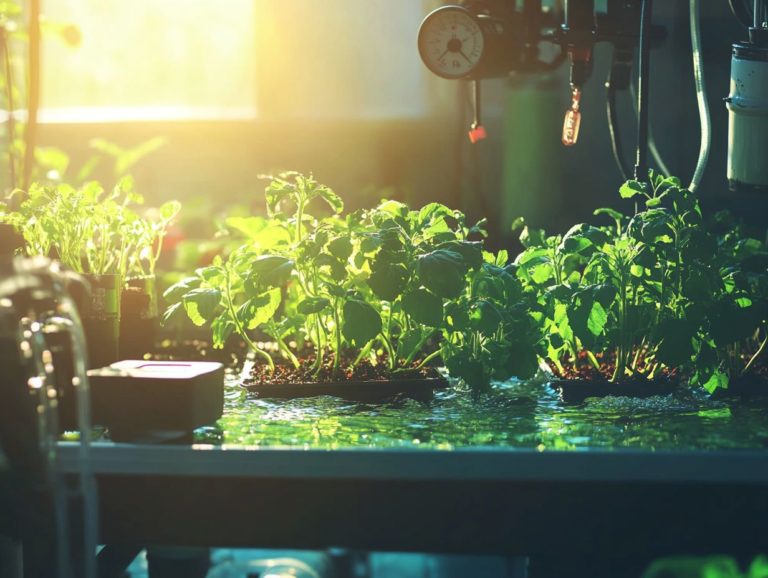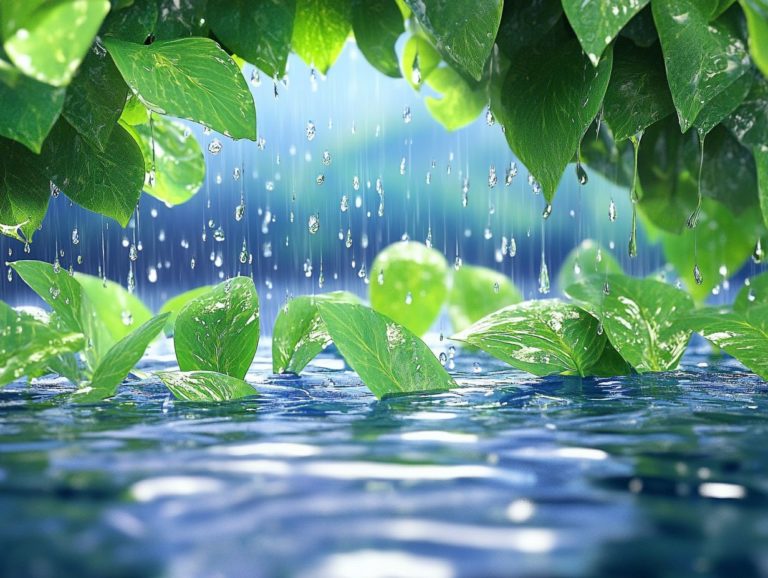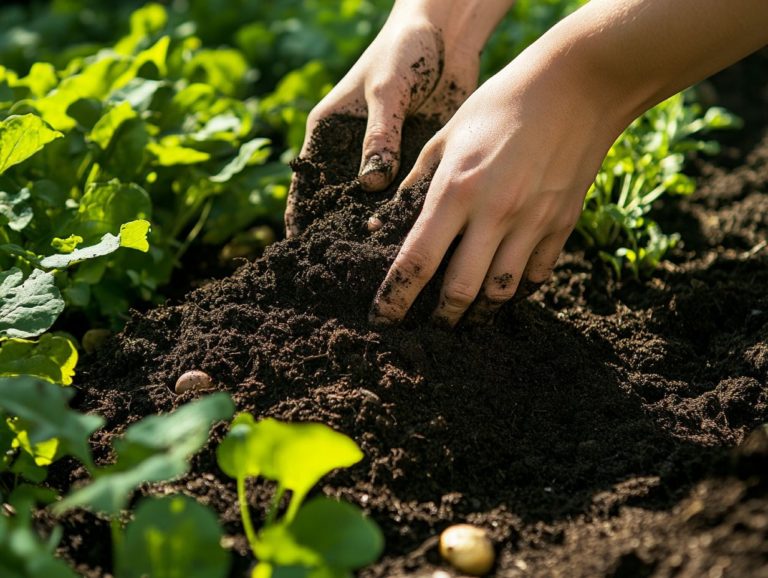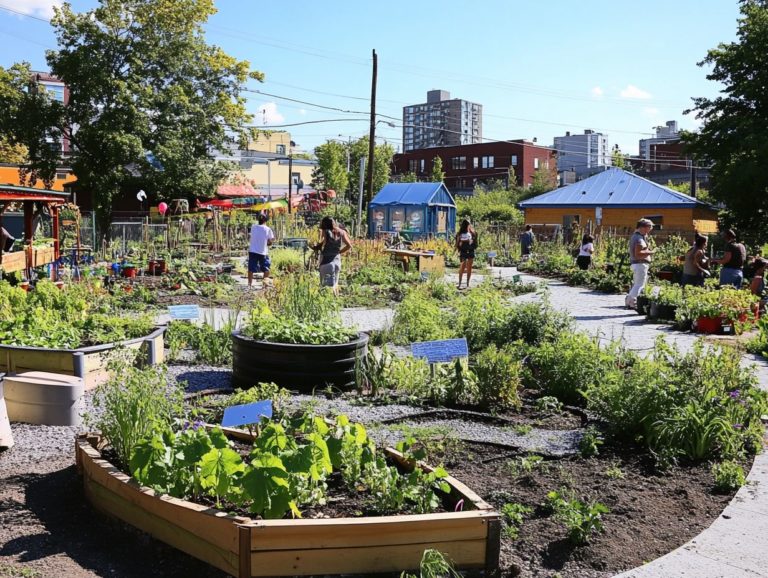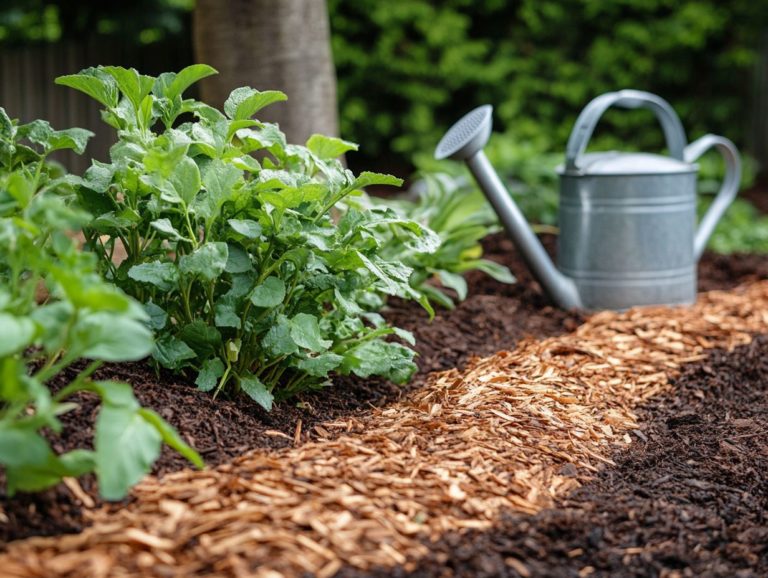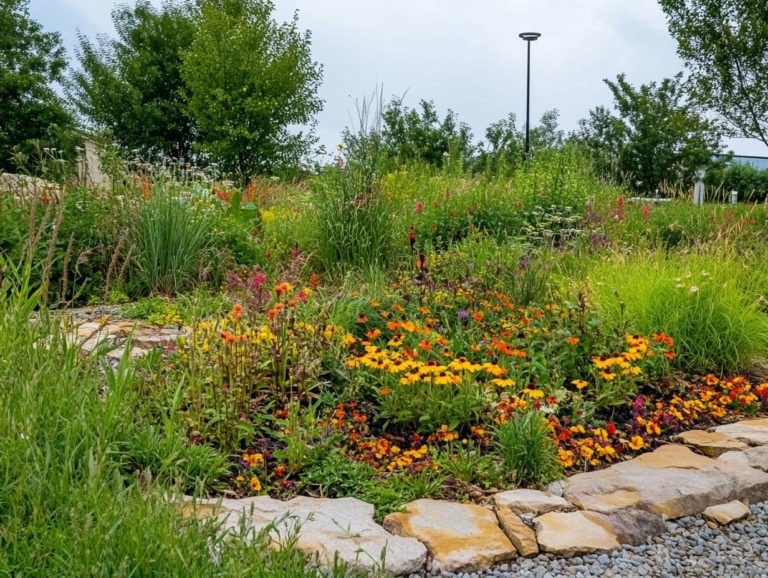5 Best Plants for Water-Saving Gardens
Creating a water-saving garden isn’t just a practical decision; it’s a gratifying way to embrace sustainability while enjoying the beauty of nature and nurturing diverse ecosystems.
This article explores five fantastic plants that thrive on minimal water, including various drought-tolerant options:
- Succulents
- Catmint
- Purple Coneflower
- Giant Hyssops
- Lavender
- Cacti
- Rosemary
- Sage
You ll discover the benefits of each plant, the ideal conditions for their growth, and the best ways to incorporate them into your garden design. Ensuring well-draining soil and adequate sunlight is essential for flourishing growth.
You ll also find maintenance tips to help your garden thrive, leading to a landscape that celebrates native varieties and supports local wildlife. Get ready to turn your backyard into a stunning eco-friendly oasis today!
Contents
- Key Takeaways:
- 1. Succulents
- 2. Lavender
- 3. Cacti
- 4. Rosemary
- 5. Sage
- What Are Water-Saving Gardens and Why Are They Important?
- Frequently Asked Questions
- What are the 5 best plants for water-saving gardens?
- Why are succulents good for water-saving gardens?
- How does aloe vera help conserve water in gardens?
- What makes lavender a good plant for water-saving gardens?
- What are the benefits of using yarrow in water-saving gardens?
- Can cacti be used in water-saving gardens?
Key Takeaways:
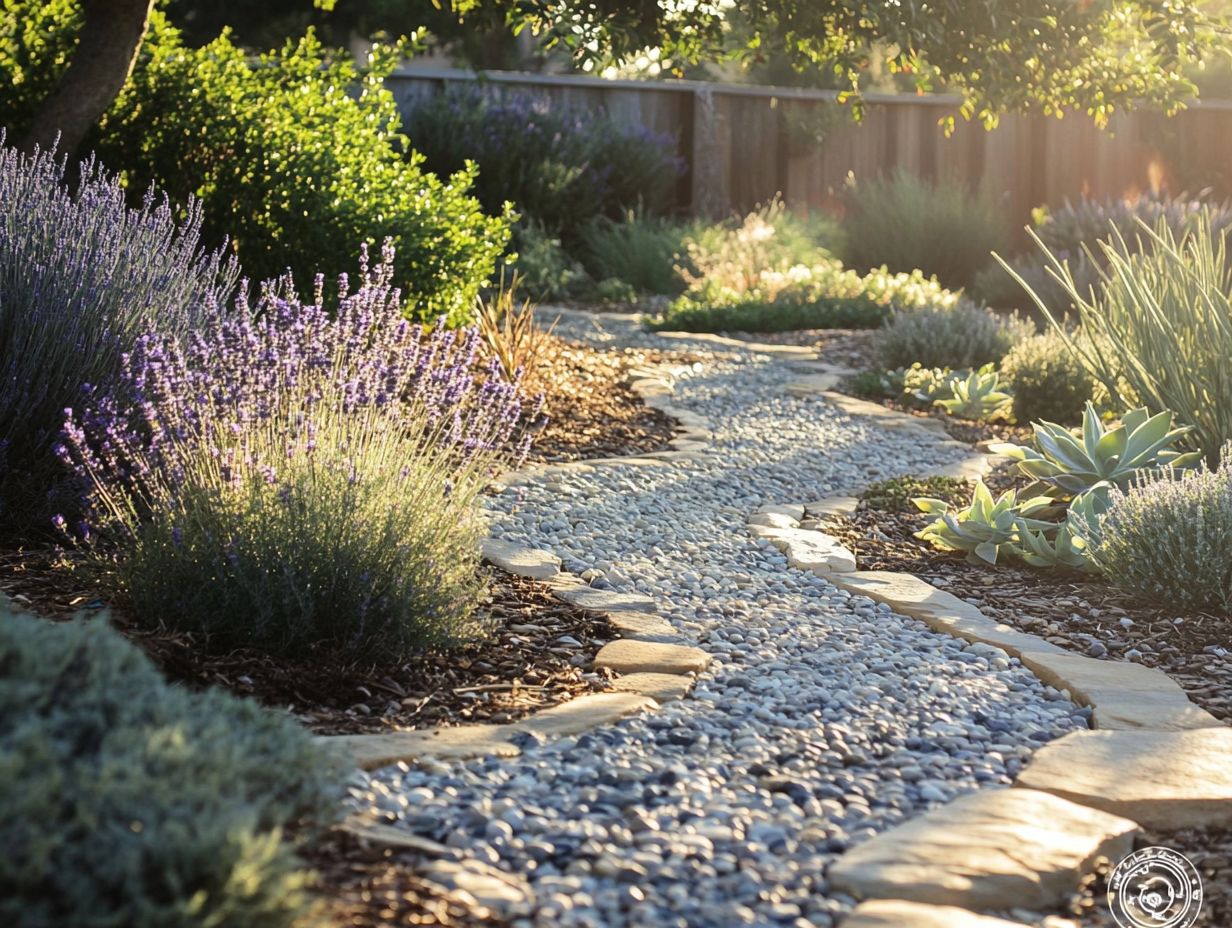
- Succulents, lavender, cacti, rosemary, and sage are the top 5 plants for water-saving gardens, ideal for landscaping that conserves water.
- Water-saving gardens promote sustainability and help conserve water resources.
- These plants have adapted to dry conditions and require minimal watering, enhancing the beauty of your landscape.
1. Succulents
Succulents are drought-tolerant plants that thrive in well-draining soil. They are the perfect choice for those looking to create a low-maintenance yet vibrant landscape filled with colorful varieties. Their ability to store moisture is essential for environments where water conservation is crucial and helps maintain the health of surrounding ecosystems.
With a stunning array of shapes, sizes, and colors, succulents flourish in various habitats while requiring minimal care once established. This makes them ideal for both novice and experienced gardeners who value nature and biodiversity.
Among the most beloved varieties are the classic Echeveria, known for its enchanting rosette shape and vibrant hues; the resilient Aloe Vera, cherished for its medicinal benefits; and the stylish Haworthia, famous for its compact form. Each of these species has its unique care requirements.
For example, Echeveria loves bright, indirect light, while Aloe prefers direct sunlight and only needs watering every two to three weeks. Remember, using well-draining soil often a cactus mix is crucial to prevent root rot.
By integrating succulents into your garden, you create sustainable designs that foster biodiversity and minimize water usage while enhancing the visual appeal of your landscapes.
2. Lavender
Lavender is a cherished drought-tolerant plant, renowned for its delightful blooms and vibrant colors. It s an excellent choice for anyone looking to combine beauty with resilience in their garden.
With many species and varieties available, such as English Lavender (Lavandula angustifolia) and French Lavender (Lavandula dentata), you can easily find types that thrive in your climate. Lavender prefers well-draining soil and full sun, thriving best in spots that receive at least six hours of direct sunlight each day. Regular pruning will help maintain its shape and promote airflow, both crucial for warding off diseases.
Lavender s benefits extend beyond aesthetics; it attracts beneficial pollinators like bees and butterflies, bolstering your ecosystem’s health. Plus, it can be dried for sachets or infused into oils, offering fragrant advantages that go beyond mere beauty.
Start your water-saving garden today and enjoy the beauty of nature while conserving resources!
3. Cacti
Cacti truly embody the essence of drought-tolerant plants. They showcase remarkable adaptations that allow them to flourish in extreme heat and arid conditions. It s no wonder they ve become a favorite for xeriscaping (a gardening method that reduces the need for watering) and low-maintenance gardens.
Consider the majestic saguaro, which demands full sun and well-draining sandy soil. The hardy barrel cactus thrives in slightly drier environments. Each cactus type has its own unique preferences. For example, the enchanting fairy castle cactus flourishes in partial shade and loves a mix rich in organic matter for healthy growth.
To ensure your cacti thrive, you must keep a close eye on their watering needs. Too much moisture can lead to root rot quickly. Cacti also add a striking visual element to any landscape design. When clustered with rocks or alongside other succulents, they create a breathtaking focal point that celebrates the beauty of resilience.
4. Rosemary
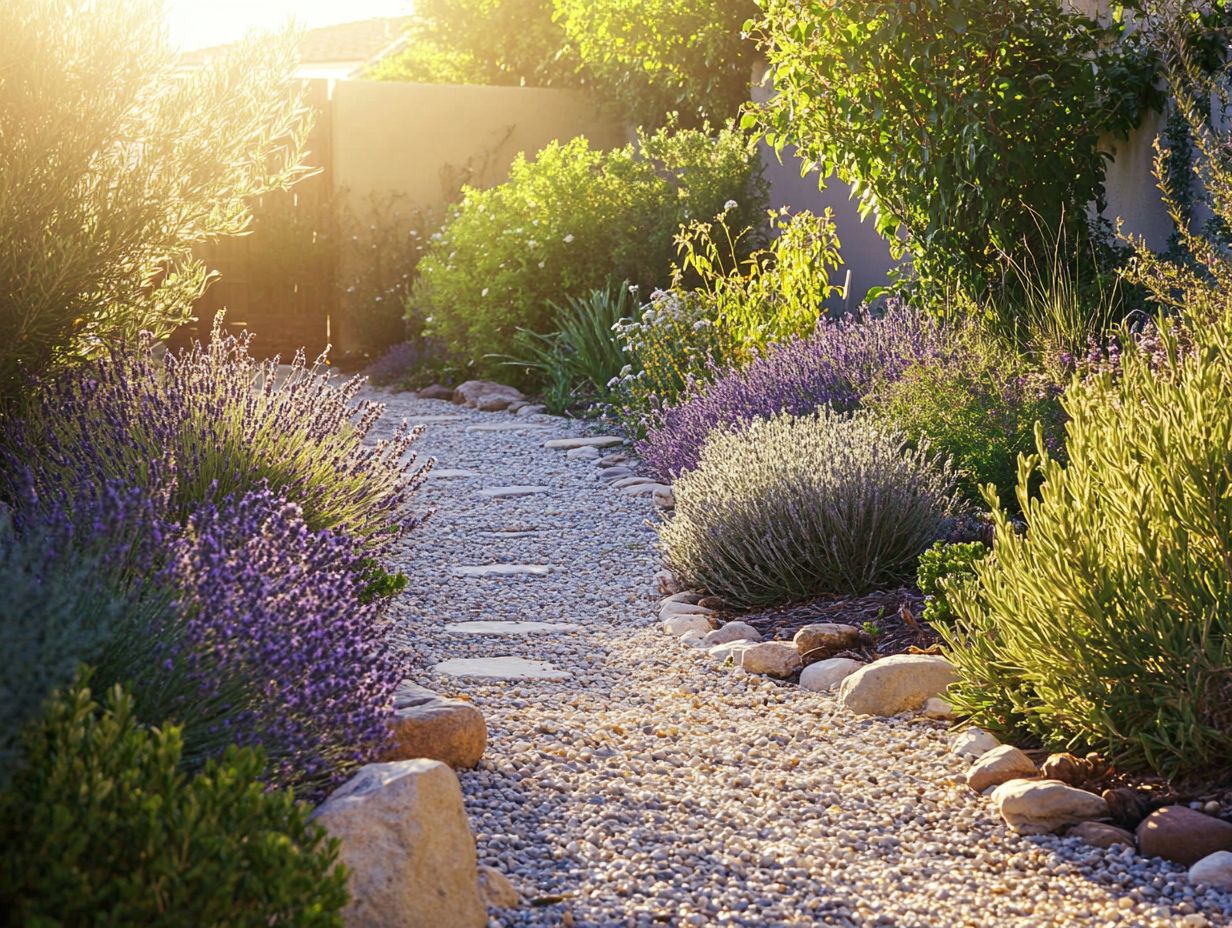
Rosemary isn t just a beloved culinary herb; it s also a resilient shrub that flourishes in well-draining soil. It s an excellent choice for sustainable gardens that blend functionality with beauty and seasonal interest.
This herb flourishes in full sunlight, ideally soaking in six to eight hours of direct light each day. To cultivate it successfully, regular pruning encourages bushier growth and lush foliage. Thoughtful watering during dry spells keeps it vibrant.
Its adaptability spans various climates, especially in Mediterranean or subtropical regions. Rosemary elevates dishes like roasted meats and vegetables. It also attracts beneficial pollinators and acts as a natural pest deterrent. This enriches local ecosystems while providing year-round aesthetic charm in your garden.
5. Sage
Sage is a remarkable herb that thrives in drought conditions. It brings rich flavors to your culinary creations while flourishing in gardens with well-draining soil and minimal upkeep. It s perfect whether you re just starting or have been gardening for years.
You can find various types of sage, such as common sage, purple sage, and pineapple sage. Each has unique growing conditions and care needs. For instance, common sage loves the sun and prefers sandy or loamy soil, while pineapple sage enjoys slightly more humid environments.
These herbs not only enhance your dishes from savory meats to infused teas but also attract pollinators and beneficial insects. By planting sage, you enjoy its versatility in the kitchen and contribute to a thriving environment that supports local wildlife.
What Are Water-Saving Gardens and Why Are They Important?
Water-saving gardens, often brought to life through xeriscaping, are vital for promoting sustainable gardening practices. They focus on conserving water resources and enhancing environmental health. Following 5 tips for sustainable water use in gardening, these gardens use drought-tolerant plants to create vibrant ecosystems that need minimal irrigation, conserving precious water resources as climate challenges increase.
Water-saving gardens not only look gorgeous but also save you money on water bills! By incorporating a diverse array of native and adaptive plant species, these gardens thrive in various conditions while minimizing the need for supplemental watering. For more tips, check out the top 5 water-saving strategies for gardens.
The plants you choose are crucial, as each offers unique benefits in resilience and aesthetic appeal, especially considering seasonal colors and growth habits. Alongside smart plant selection, pay attention to soil composition; adding organic matter improves water retention and enhances soil structure.
Utilizing mulching techniques regulates soil temperature and reduces evaporation. Regular maintenance practices, like rainwater harvesting and mindful pruning, can further optimize your garden’s health. This ensures these vital green spaces flourish even amid water scarcity while supporting thriving ecosystems.
Start planning your water-saving garden today and make a difference!
How Do These Plants Help Conserve Water?
Drought-tolerant plants are crucial for conserving water. They have special adaptations that help them retain moisture.
These resilient plants often have deep root systems that tap into underground water sources. This significantly reduces their reliance on surface moisture.
Many of them feature waxy leaves that minimize evaporation. This allows them to stay hydrated even in arid climates.
Take succulents and native desert flora as examples. They require less irrigation and enhance local biodiversity while supporting pollinator populations.
By incorporating such plants into your garden, you help create resilient landscapes that adapt to changing climatic conditions.
What Are the Best Growing Conditions for These Plants?
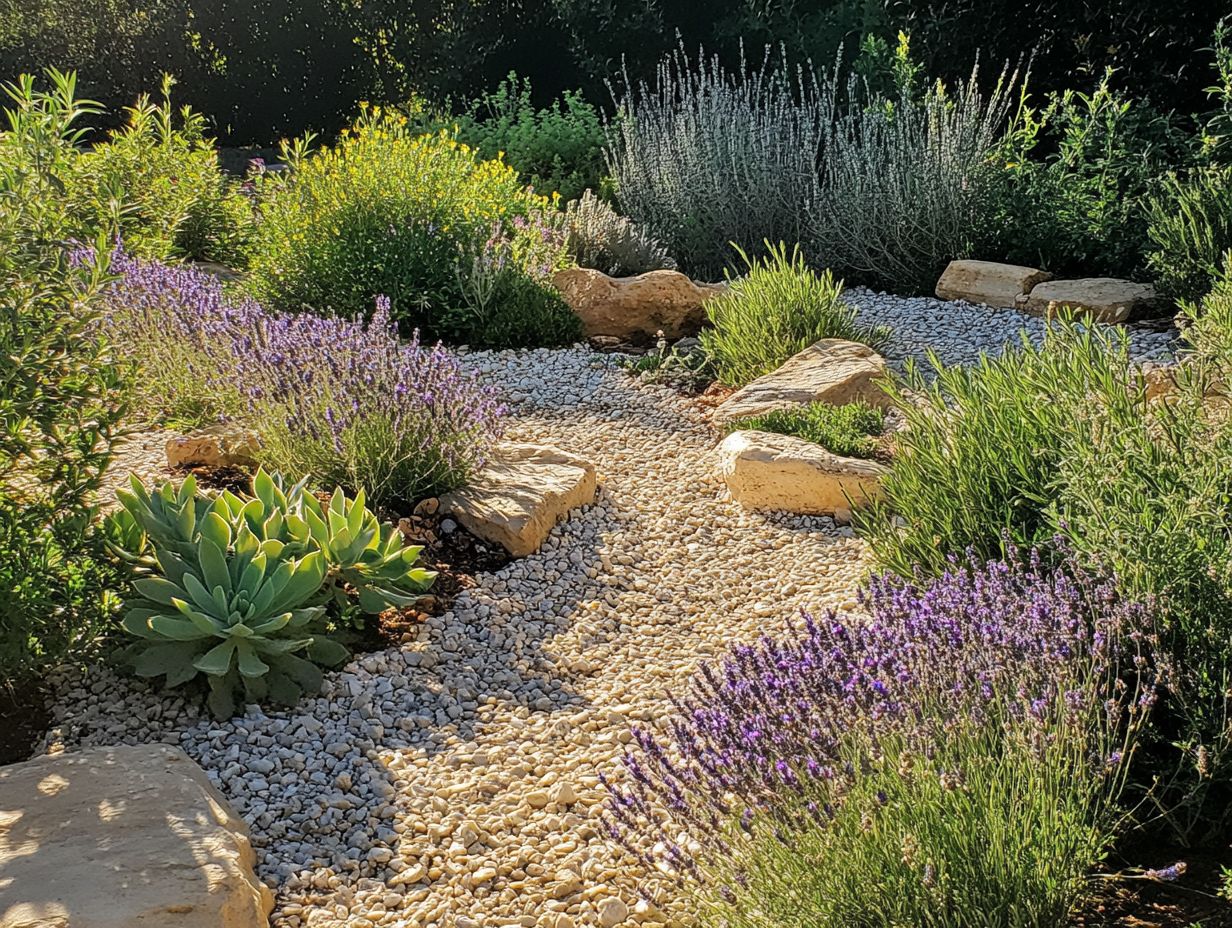
Drought-tolerant plants thrive in well-draining soil. They also need adequate sunlight and appropriate temperature and humidity levels.
To cultivate these plants, examine their specific needs based on their native habitats. This includes soil requirements and watering schedules.
Sandy or loamy soils promote proper drainage and allow roots to breathe. This helps mitigate the risk of waterlogged conditions.
Providing six to eight hours of direct sunlight daily fosters robust growth. If your environment is less than ideal, enhance soil quality with organic matter.
Mulching helps retain moisture during dry spells, allowing hardy plants to flourish despite challenging conditions.
How Can These Plants Be Incorporated into a Garden Design?
Incorporating drought-tolerant plants, such as those highlighted in our list of 5 native plants for water-sensitive areas, into your garden design enhances its beauty while promoting sustainable practices.
This approach transforms your garden into a vibrant oasis that thrives with minimal effort.
Carefully select combinations of colors and textures for a visually striking garden. For example, pair succulent varieties like agave with colorful flowering plants like purple salvias.
Understanding the principles of xeriscaping a landscaping method that reduces or eliminates the need for irrigation will further enhance your efforts. Group plants with similar water requirements and use mulch to retain soil moisture.
Incorporating native species well-adapted to your environment promotes ecological health and keeps your garden lush.
What Other Benefits Do These Plants Offer?
Drought-tolerant plants offer many advantages beyond their impressive water-saving abilities.
They enhance local ecosystems and provide habitats for wildlife while promoting organic gardening practices.
By incorporating these resilient species, you increase pollinators and beneficial insects, supporting the food chain.
Their deep root systems prevent soil erosion and improve water retention, ensuring fertile soil.
To maximize these benefits, consider grouping drought-tolerant species together. This creates diverse plant communities that mimic natural ecosystems.
Adding native varieties not only conserves water but also bolsters local wildlife populations. This results in a vibrant garden that thrives in harmony with nature.
What Are Some Tips for Maintaining a Water-Saving Garden?
Maintaining a water-saving garden requires careful attention to the specific needs of drought-tolerant plants. Consider implementing 5 ways to design a water-conserving garden by using proper irrigation methods and soil management. Make seasonal adjustments to help plants grow while conserving water.
Implementing efficient watering methods, such as drip irrigation or soaker hoses, allows you to target plant roots directly. This significantly minimizes evaporation and runoff. Improving soil health is equally vital. By incorporating organic matter like compost, you can enhance moisture retention, creating a more sustainable environment for your plants.
Seasonal adjustments, like summer mulching, keep roots cool and further reduce water loss. This ultimately boosts your garden’s resilience. Keep an eye on your plants! If you see signs of stress, it s time to adjust your watering schedule or care plan, allowing your garden to remain lush and vibrant throughout the dry months.
Frequently Asked Questions
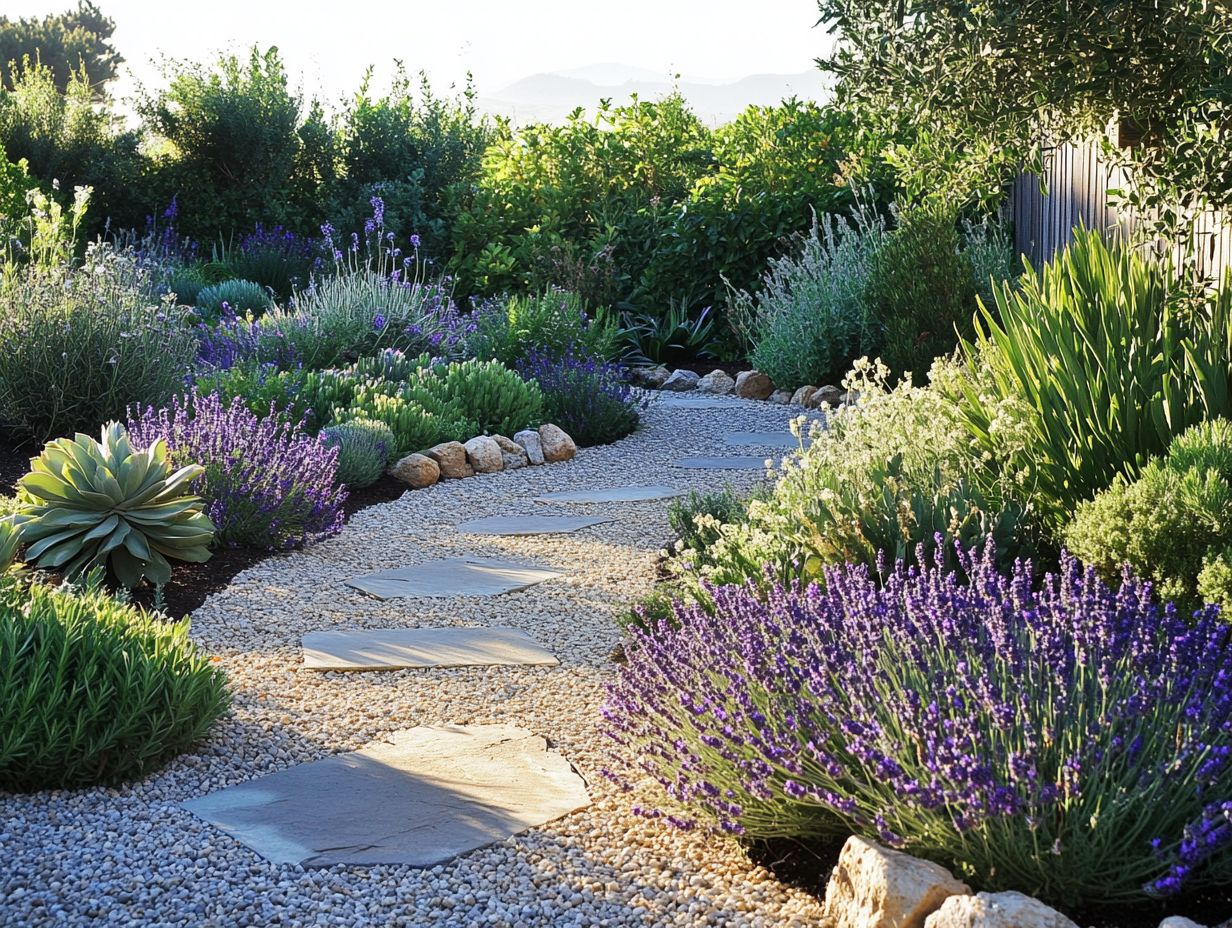
What are the 5 best plants for water-saving gardens?
The 5 best plants for water-saving gardens are succulents, aloe vera, lavender, yarrow, and cacti.
Why are succulents good for water-saving gardens?
Succulents are good for water-saving gardens because they have thick leaves and stems that store water. For more tips on how to maintain a sustainable garden, check out 5 easy ways to reduce water waste in gardens. This allows them to survive in dry conditions with minimal watering.
How does aloe vera help conserve water in gardens?
Aloe vera has a shallow root system and thrives in drought conditions, making it a great choice for water conservation gardens.
What makes lavender a good plant for water-saving gardens?
Lavender requires very little water to survive and can withstand dry, hot conditions, making it an excellent addition to a water-saving garden.
What are the benefits of using yarrow in water-saving gardens?
In addition to being drought-resistant, yarrow attracts beneficial insects and improves soil quality. This makes it a valuable plant in water-saving gardens.
Can cacti be used in water-saving gardens?
Yes, cacti are an excellent choice for water-saving gardens as they require very little water and thrive in hot, dry climates. To enhance your gardening practices, consider exploring 5 ways to maximize water usage in gardening.
Start your water-saving garden today and share your tips with others!

